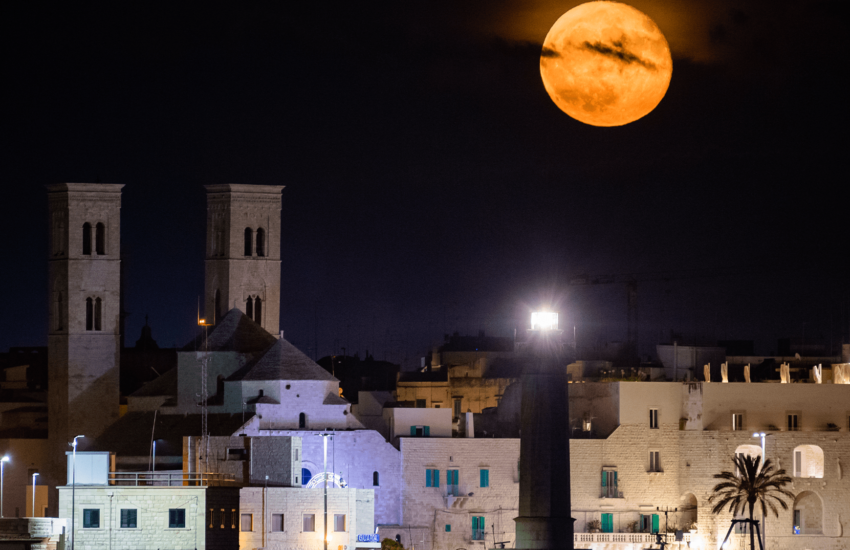| July 1 | Crescent Moon Above Mars |
| July 5 | Earth at Aphelion |
| July 10 | Lāhainā Noon Begins |
| July 21 | Full Buck Moon |
| July 29 and 30 | Delta Aquarid Meteor Shower Predicted Peak |
July’s heat can sometimes make it feel like Earth is sitting in the sun, but our planet is honing in on its furthest point from the sun for the whole year. The short summer nights are also gradually growing a bit longer, but there is still time for skygazing in some more comfortable temperatures for those in the Northern Hemisphere. Here are some events to look out for this month.
July 1– Crescent Moon Above Mars
Mars rises in the sky from the east-northeast beginning at about 2:00 a.m. local time. If the sky is clear, skygazers can catch a glimpse of a thin crescent moon just above the Red Planet by 4:45 a.m. According to the Adler Planetarium, Mars will be slightly brighter than 1st-magnitude in July and gradually get brighter through the end of the year.
[Related: Mars might have an asteroid problem.]
July 5– Earth at Aphelion
Earth will actually reach aphelion–its farthest point from the sun–on July 5. During aphelion, the Earth will be about 94,510,538 miles away from the sun. It reaches perihelion–or the closest distance to the sun–in January, when it is about 3 million miles closer. There is no real effect on Earth’s climate, as our seasons are dictated by the tilt of Earth’s axis.
July 10– Lāhainā Noon Begins
For those in the Earth’s tropics, July offers a second opportunity to experience this twice a year event. During Lāhainā Noon, the sun is directly overhead at around solar noon and upright objects do not cast shadows.
If you are in Hawaii, you can consult this timetable to see what day and times July’s Lāhaina Noon will occur near you.
July 21– Full Buck Moon
July’s full moon will rise on Sunday July 21 and reach peak illumination at 6:14 a.m. EDT. The moon will be below the horizon, so skygazers should look towards the southeast after the sunset to watch the Buck Moon rise. You can also consult the Farmer’s Almanac Moonrise and Moonset Calculator to calculate when this month’s full moon will be visible where you are.
[Related: The moon is shrinking (very slowly).]
The name Buck Moon refers to the time of year when the antlers of male deer are in full-growth mode. Additional names for July’s full moon include the Raspberry Moon or Miskomini-giizis in Anishinaabemowin (Ojibwe), the Honey Bee Moon or Ãamowaawe Neepãʔuk in the Mahican Dialect of the Stockbridge-Munsee Band of Wisconsin, and the Little Sister of the Summer Moon or Sáísgekneh in Seneca.
July 29 and 30–Delta Aquarid Meteor Shower Predicted Peak
The Delta Aquarids meteor shower officially kicks off around July 18, but is predicted to peak on July 29 and 30. If you miss it, this meteor shower doesn’t have a peak that is quite as noticeable as others. It “rambles” along steadily from the end of July into the beginning of August, when it joins up with the Perseids Meteor shower.
The Delta Aquarids’ can reach a maximum rate 15 to 20 meteors per hour in a dark sky with no moon. According to EarthSky, the waning gibbous and last quarter moon will light up the sky past midnight. The best time to watch for both Delta Aquarids and Perseids meteor showers is just before the moon rises in late July.
The same skygazing rules that apply to pretty much all space-watching activities are key this month: Go to a dark spot away from the lights of a city or town and let the eyes adjust to the darkness for about a half an hour.

